Buddha Belly Bamboo: Grow & Care for Bambusa Ventricosa
Written by Iris
Oct 19 2021
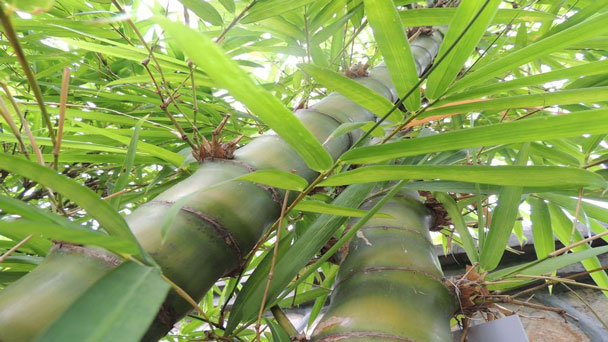
Buddha belly bamboo is a kind of bamboo plant with a very strange appearance. The round bamboo tube is like the belly of Maitreya Buddha, and the leaves are evergreen. The ground-planted Buddha belly bamboo often grows into tall bamboo clumps. The potted Buddha belly bamboo can be artificially truncated to form a deformed backbone, which is extremely ornamental. Buddha belly bamboo has strong adaptability to the environment, has a certain degree of drought resistance, cold resistance, and negative tolerance. It is easier to maintain potted plants. Therefore, it is loved by many potted lovers.
Prior to filling a container with soil, wet potting soil in the bag or place in a tub or wheelbarrow so that it is evenly moist. Fill container about halfway full or to a level that will allow plants, when planted, to be just below the rim of the pot. Rootballs should be level with soil line when project is complete. Water well.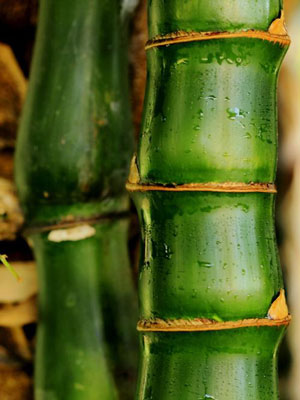
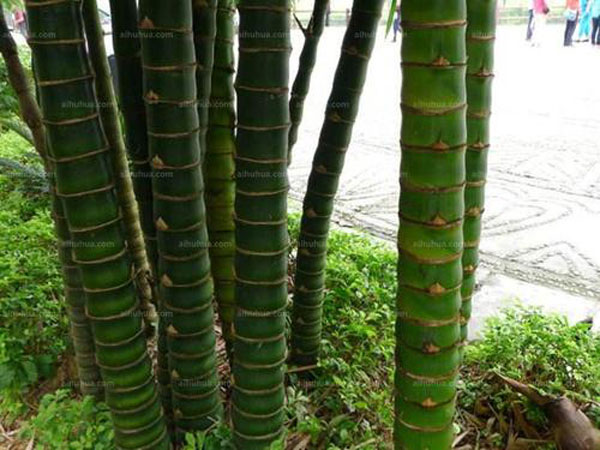
In summer: Lots of watering
In Winter: Less Watering
If you have a large garden, compare and discover plants which need lots of water and you will be able to decide the irrigation method to install in your garden. For over-watering plants drip irrigation is implemented. Such methods will help to water your plants in precise quantities ensuring their perfect care.
Always use sharp, clean tools when pruning Buddha Belly Bamboo. There are many tools available depending on the job. Hand shears, pruners, and loppers are ideal for most shrubs. Pole pruners and tree saws are better for large, mature shrubs or trees. If a tree is so large that it can't be safely pruned with a pole pruner, it is best to call in a professional tree service.
Don't limit your treatment to just the active or infested plants. In most cases treating the plants around the infested once is a good practice. Flip over the leaves and gently shake them off into soapy water. A soap spray will kill mites at the earliest sign before the webbing occurs. A hard spray of water will knock them off and will keep away the dust from accumulating on the leaves. Water your garden paths weekly to eliminate breeding grounds. You can also spray a solution of wheat flour, buttermilk and water.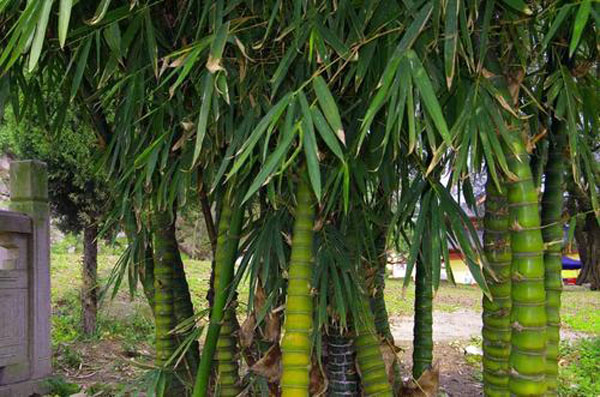
Although Buddha Belly Bamboo is famous for its fast growth rate and impressive size, there is also a type which is smaller, yet grows just as fast. This is the Dwarf Buddha Belly Bamboo, also known as wamin bamboo or Vulgaris bamboo, which grows fast, but remains rather short in comparison with most varieties. It only takes the plant about three years to achieve full maturity.
Yellow Buddha Belly Bamboo
Another type of Buddha Belly bamboo is the Yellow Buddha Belly Bamboo, which is mostly known as the bambusa ventricosa Kimmei. This is a very beautiful bamboo plant, which has culms that emerge green, but soon turn golden-yellow with green stripes. Also referred to as Striped or Painted Bamboo, this cultivar is a popular choice for indoor and outdoor potted plants. In addition to this, it is also a top collector's bamboo that makes an excellent ornamental centerpiece, both indoors and out.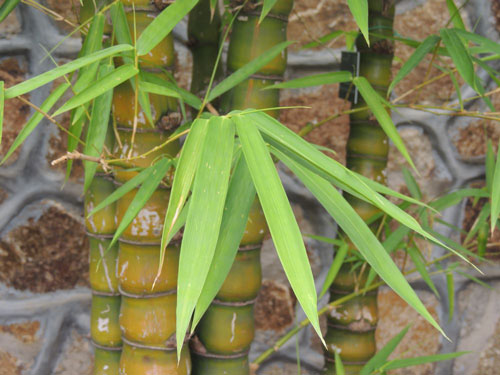
If you prefer potted plants, and you have time to give them extra care and attention, Buddha Belly also makes for an ideal bonsai specimen.
One way to promote bulging culms is to prune the tops of the poles at least once a year. Without their tops, the bamboo will also tend to do more zig-zagging.
Stressing the plants with water deprivation is also a very effective method. Of course, you have to be careful not to over-stress and kill the plant. Generally, the leaves will start to curl when a bamboo is in need of water.
Where to Grow Buddha Belly BambooHow to Grow Buddha Belly BambooBuddha Belly Bamboo Propagation with SeedsBuddha Belly Bamboo Propagation with CuttingsHow to Care for Buddha Belly BambooBuddha Belly Bamboo LightingBuddha Belly Bamboo Soil CareBuddha Belly Bamboo WateringBuddha Belly Bamboo Temperature & Humidity CareBuddha Belly Bamboo FertilizerBuddha Belly Bamboo PruningBuddha Belly Bamboo Pests & Diseases CareVarieties of Buddha Belly BambooBuddha Belly Bamboo Care FAQWhy is it called Buddha Belly Bamboo?Can I keep my Buddha Belly Bamboo in a pot?Why is my Buddha Belly Bamboo growing without bulbous culms?
Where to Grow Buddha Belly Bamboo
Containers are excellent when used as an ornamental feature, a planting option when there is little or no soil to plant in, or for Buddha Belly Bamboo plants that require a soil type not found in the garden or when soil drainage in the garden is inferior. If growing more than one plant in a container, make sure that all have similar cultural requirements. Choose a container that is deep and large enough to allow buddha belly bamboo root development and growth as well as proportional balance between the fully developed plant and the container. Plant large containers in the place you intend them to stay. All containers should have drainage holes. A mesh screen, broken clay pot pieces(crock) or a paper coffee filter placed over the hole will keep soil from washing out. The potting soil you select should be an appropriate mix for the Buddha Belly Bamboo plants you have chosen.Prior to filling a container with soil, wet potting soil in the bag or place in a tub or wheelbarrow so that it is evenly moist. Fill container about halfway full or to a level that will allow plants, when planted, to be just below the rim of the pot. Rootballs should be level with soil line when project is complete. Water well.

How to Grow Buddha Belly Bamboo
Buddha Belly Bamboo Propagation with Seeds
Buddha Belly bamboo (Bambusa ventricosa), hardy in U.S. Department of Agriculture plant hardiness zones 9 through 10, is a large cane, non-invasive bamboo that gets its name from the swelling that occurs above and below the cane nodes. Although bamboo infrequently flowers and seed may not be readily available, growing Buddha's Belly bamboo from seed is possible with proper seed preparation and the correct growing medium.- Mix a 1:1 ratio of perlite to peat moss. Spread evenly in a planting tray. Lightly water until it is moistened, using a hand-held mister.
- Place the Buddha's belly bamboo seeds in a plastic container. Hold the container under running water, and rinse the seeds thoroughly. Alternatively hold the seeds in your hand, allowing the water to run over the seeds and through your fingers. Rinse the seeds thoroughly to remove any dirt or debris.
- Obtain a 10 percent saline solution from a pharmacy, or purchase a 100 percent master saline solution and dilute at 1 part solution to 9 parts water. Place the seeds in a plastic container and spread out as much as possible. Add just enough saline solution to cover the seeds. Leave the seeds to soak for 15 minutes. Remove the seeds from the salt solution, and rinse under running water.
- Place the bamboo seeds in another plastic container, and cover with fresh water. Leave the seeds to soak for 15 minutes. Transfer the seeds from the fresh water soak directly to the planting tray.
- Plant the Buddha's belly bamboo in the planting tray by scattering or sewing in neat rows. Cover the seeds lightly with the perlite and peat moss mixture. Place the cover on the planting tray, and set the tray in a warm location out of direct sunlight. A temperature of between 65 and 75 degrees Fahrenheit is optimal for germination. Check the moisture content of the tray a couple of times per week, and mist with water if necessary to maintain moisture.
- Monitor the growing tray for three to four weeks until seeds begin to germinate and break the surface of the soil. Leave the cover in place until the seedlings are tall enough to touch it, and then remove the cover. At one month after germination, add all-purpose liquid fertilizer to the water in the mister, following the manufacturer's directions for ratio and application. When seedlings reach 4 to 6 inches in height, or one month following germination, seedlings may be transplanted into 4-inch-diameter pots.
Buddha Belly Bamboo Propagation with Cuttings
- Select a culm and trim the Buddha Belly Bamboo primary branches. Branches should preferably be cut at a young to intermediate maturity (1-2 years) to guarantee a high survival rate. Discard the top portion leaving 2-3 nodes and the basal swell. These bamboo cuttings are usually around 30cm long.
- Alternatively (to give faster results) dip the bamboo cuttings in a growth regulator mixture or rooting hormone for 24 hours, and seal the top cut end with wax to prevent desiccation.
- Plant the bamboo cuttings vertically (preferably in a slight angle), either in poly bags or raised beds in such a way that the rhizomatous swelling and one node remain below the soil surface and at least one or two nodes above the surface.
- Keep the poly bags under partial shade (agro shade nets provide 75% shade) and water the soil daily.

How to Care for Buddha Belly Bamboo
Buddha Belly Bamboo Lighting
During the growth period of Buddha belly bamboo, there needs to be sufficient direct sunlight. Daily maintenance is best to be maintained in full daylight. When it needs to be viewed, it can be moved indoors for a short period of time. In the spring and autumn, during the rapid growth period, before and after the shoot buds germinate, they must be maintained in full daylight to avoid excessive growth of new shoots. If there are no conditions, at least it should be placed on a south-facing open balcony. If conditions permit, add an evening fill light, the effect will be better.Buddha Belly Bamboo Soil Care
Fertile, humus-rich, well-drained soil.Buddha Belly Bamboo Watering
Plants need water, but the watering amount varies in different plants. Summer Plants does not need much watering but some Vegetables plant does need lots of water. Watering should be in an optimum amount for plant's healthy growth. For proper watering, first find the type of soil and type of soil drainage favorable for the plant. Watering is one of the major factors of Buddha Belly Bamboo care. A caring gardener should always know the amount of water needed for respective plants. Watering Buddha Belly Bamboo requirements are as follows:In summer: Lots of watering
In Winter: Less Watering
If you have a large garden, compare and discover plants which need lots of water and you will be able to decide the irrigation method to install in your garden. For over-watering plants drip irrigation is implemented. Such methods will help to water your plants in precise quantities ensuring their perfect care.
Buddha Belly Bamboo Temperature & Humidity Care
It likes warm and humid climate, low cold resistance, can withstand light frost and extreme low temperature around 0℃. The temperature in winter should be kept above 10℃, and it is often frozen below 4℃.Buddha Belly Bamboo Fertilizer
Established Buddha Belly Bamboo should be fertilized every 2-3 years. Feed in early spring when plants start growing. Fertilizers are available in many forms: granulated, slow-release, liquid feeds, organic or synthetic. Determine which application method is best for the situation and select a product designed for trees and shrubs, or go with a nutritionally balanced, general-purpose formula such as 10-10-10. Always follow the fertilizer package directions for application rates and scheduling. Over-fertilizing plants or applying at the wrong time during the growing season can result in plant injury.Buddha Belly Bamboo Pruning
Pruning Buddha Belly Bamboo may be needed to remove dead branches, encourage bushier growth, promote more flowers, or maintain a specific size or shape. Dead branches should be removed close to the trunk, flush with the bark. When pruning to control a plant's size or shape, cuts should be made just above a leaf bud and at a slight angle. This bud will be where the new growth sprouts. Many shrubs can be regularly sheared to keep them shaped as a hedge, edging or formal foundation planting.Always use sharp, clean tools when pruning Buddha Belly Bamboo. There are many tools available depending on the job. Hand shears, pruners, and loppers are ideal for most shrubs. Pole pruners and tree saws are better for large, mature shrubs or trees. If a tree is so large that it can't be safely pruned with a pole pruner, it is best to call in a professional tree service.
Buddha Belly Bamboo Pests & Diseases Care
Buddha belly is known to be infected by red spider mites. Spider mites control should be implemented as soon as their activity is diagnosed. This will prevent further damage and will help to minimise the treatments. However, spider mites control will almost always takes several treatments, because the spraying will not kill the eggs. Eggs will be hatching following your first treatment. To insure you have killed all activities, give 3-6 treatments once a week. This schedule is must in the warmer months, when they multiply quickly. During off-season, when they multiply slowly treat 2-4 treatments every two weeks.Don't limit your treatment to just the active or infested plants. In most cases treating the plants around the infested once is a good practice. Flip over the leaves and gently shake them off into soapy water. A soap spray will kill mites at the earliest sign before the webbing occurs. A hard spray of water will knock them off and will keep away the dust from accumulating on the leaves. Water your garden paths weekly to eliminate breeding grounds. You can also spray a solution of wheat flour, buttermilk and water.

Varieties of Buddha Belly Bamboo
Dwarf Buddha Belly BambooAlthough Buddha Belly Bamboo is famous for its fast growth rate and impressive size, there is also a type which is smaller, yet grows just as fast. This is the Dwarf Buddha Belly Bamboo, also known as wamin bamboo or Vulgaris bamboo, which grows fast, but remains rather short in comparison with most varieties. It only takes the plant about three years to achieve full maturity.
Yellow Buddha Belly Bamboo
Another type of Buddha Belly bamboo is the Yellow Buddha Belly Bamboo, which is mostly known as the bambusa ventricosa Kimmei. This is a very beautiful bamboo plant, which has culms that emerge green, but soon turn golden-yellow with green stripes. Also referred to as Striped or Painted Bamboo, this cultivar is a popular choice for indoor and outdoor potted plants. In addition to this, it is also a top collector's bamboo that makes an excellent ornamental centerpiece, both indoors and out.

Buddha Belly Bamboo Care FAQ
Why is it called Buddha Belly Bamboo?
Under most circumstances, the culms of Bambusa ventricosa grow more compact, with shorter internodes that bulge out in the middle. So unlike most of the more common bamboos, with their stick-straight canes, the bulbous culms of this variety look like chubby little bellies. And when you think of chubby bellies in Southeast Asia, it's hard not to think of the laughing Buddha. Buddha’s Eightfold Path promises to bring deliverance from suffering. And Buddhism is the most popular religion in this part of the world. Furthermore, bamboo is already recognized to be something of a magical plant. So naming an already attractive variety after the Buddha just makes sense.Can I keep my Buddha Belly Bamboo in a pot?
Yes, Buddha Belly Bamboo does pretty well in a container. But like most large plants, they are more comfortable in the soil where the roots can stretch out and drain well. A potted plant will require more attention, and it won't grow nearly as tall as a Bambusa planted directly in the earth.If you prefer potted plants, and you have time to give them extra care and attention, Buddha Belly also makes for an ideal bonsai specimen.
Why is my Buddha Belly Bamboo growing without bulbous culms?
In some cases, you might find that your Buddha Belly Bamboo culms are growing like ordinary bamboo, without the characteristic bulging or zig-zagging. But don't worry. Master bamboo gardeners have developed some tricks to help encourage this desirable trait by inducing stress.One way to promote bulging culms is to prune the tops of the poles at least once a year. Without their tops, the bamboo will also tend to do more zig-zagging.
Stressing the plants with water deprivation is also a very effective method. Of course, you have to be careful not to over-stress and kill the plant. Generally, the leaves will start to curl when a bamboo is in need of water.
Latest Updated
- Benefits of Bugleweed - 7 Science-backed Health Benefits
- Bugleweed Dangers & Side Effects - Is It Poisonous?
- How to Plant Evergreen Trees - What You Should Know
- When to Plant Evergreens - Grow Guide for Evergreen Trees
- 12 Wonderful Evergreen Shrubs for Your Garden
- 12 Popular Evergreen Plants with Pictures for Beginners
- When And How To Prune A Lilac Bush Like a Pro
- How to Grow & Care for Lilac Vine (Hardenbergia Violacea)
- Japanese Lilac Tree (Syringa Reticulata) Care & Propagation Guide
- Shumard Oak Pros and Cons - What to Know
Popular Articles
- Winter maintenance of Antirrhinum Majus
- How to Grow Terminalia Mantaly Tree
- How to Grow and Care for Crossostephium Chinense
- How to grow Antirrhinum Majus in spring
- Peristeria Elata (Dove Orchid) Profile: Info & Care Guide
- Underwatered Snake Plant (Sansevieria Trifasciata) - Signs And How To Fix
- How to Care for Brazilian Jasmine Plant (Mandevilla Sanderi)
- How to Grow & Care for Graptopetalum Purple Delight in Summer
- Rosa Chinensis (China Rose): Plant Growing & Care Tips
- How to Care for Baby Sun Rose (Aptenia Cordifolia)